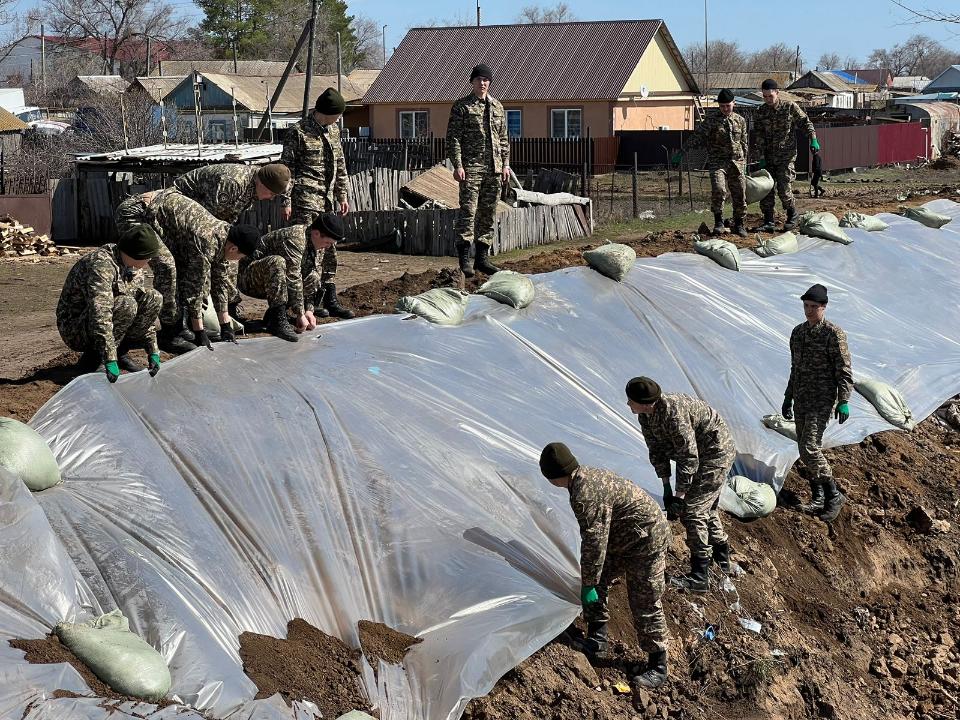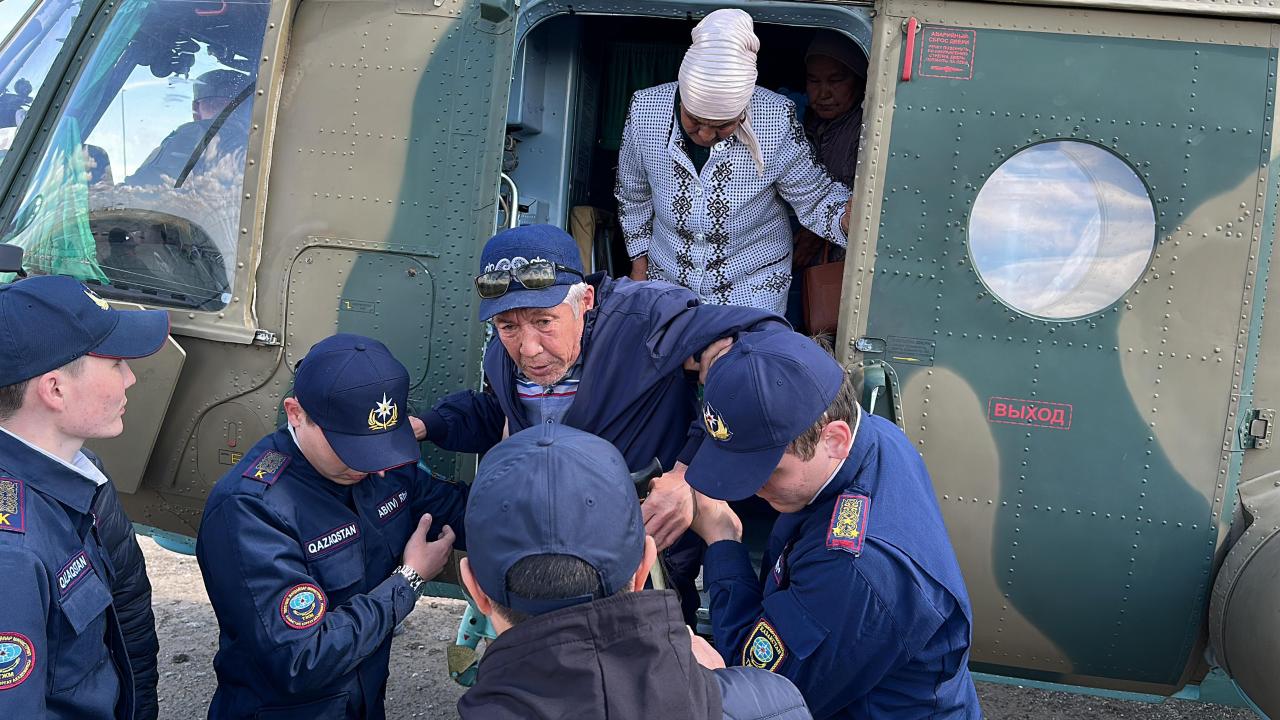ASTANA – Since the onset of the flooding, 111,194 people have been rescued and evacuated, with 39,222 of them being children, reported the Ministry of Emergency Situations on April 15.

Flood recovery efforts and emergency operations persist. Photo credit: Ministry of Emergency Situations
Aircraft rescued 3,575 people, including 1,157 children.
At least 11,950 people have returned home, while 6,814 people, including 2,995 children, are currently housed in temporary accommodation centers. More than 106,000 farm animals have been driven away to a safe place.
Sixteen medical teams from the Disaster Medicine Center are offering aid to victims, whereas 14 were hospitalized.

Evacuation mission underway. Photo credit: Ministry of Emergency Situations
In the Akmola, Aktobe, Kostanai, Atyrau, North Kazakhstan, and East Kazakhstan regions, 5,411 private residential houses and 1,607-yard territories remain flooded. Over 9.5 million cubic meters of meltwater have been drained, while 2.2 million bags and 1.2 million tons of inert material have been deployed. Water has been diverted from 3,503 homes and 2,157 yards.
Control measures are in place for 103 road overflows, 80 washouts (including nine bridges), and 71 road surfaces. Eighty-two settlements remain without a transport connection, and local executive bodies are maintaining contact with residents and ensuring adequate food and medical supplies.

People receiving humanitarian aid amidst crisis. Photo credit: Ministry of Emergency Situations
Nearly 1,400 tons of humanitarian aid have been delivered to affected regions.
The flood situation has stabilized in the Aktobe, Kostanai, Karaganda, Pavlodar, Abai and Ulytau regions. However, there is a threat of a secondary wave of floods over Atyrau, West Kazakhstan, East Kazakhstan, Akmola, and North Kazakhstan regions.
In the West Kazakhstan Region, the water level in the Zhaiyk (Ural) River continues to surge, leading to flooding in settlements in Uralsk due to flood runoff from the Shagan and Derkul rivers.
The situation in the Aktobe Region is stable yet dangerous. Rising waters in the Torgai River caused the erosion of an earthen embankment, or protective dam, in Nura village, leading to water flowing into the settlement. In Nura and Mamyr villages, 327 people and 25 units of equipment are engaged in response efforts.
Blasting operations were conducted on the Yesil River in Petropavlovsk, the North Kazakhstan Region, to prevent ice jams. Authorities are monitoring the flood situation in rivers and reservoirs through aerial visual surveys and drone technology. In certain areas, blasting operations are also underway along rivers to manage flood risks.
Humanitarian aid
On April 14, the Ministry of Emergency Situations distributed 264 tons of food supplies, including flour, pasta, buckwheat, and canned meat, from the state material reserve to support evacuees from Kulsary, a village in the Atyrau Region. The reserve refers to the strategic stockpiling of essential goods and materials managed by the government to ensure national security, economic stability, and the uninterrupted supply of critical resources in case of emergencies such as natural disasters, economic crises, or other significant disruptions.
An additional 92 tons of food were allocated to 7,000 military personnel mobilized for flood relief efforts in Atyrau and West Kazakhstan regions.
Previously, special and engineering equipment, bedding sets, motor pumps, and field kitchens were allocated from the state material reserve to address flooding in the Akmola, Atyrau, Aktobe, Kostanai, East Kazakhstan, West Kazakhstan, North Kazakhstan, and Mangistau regions
Affected families will receive one-time compensation equivalent to 100 monthly calculation indicators ($822). Destroyed homes will be reconstructed using government resources. This was announced by Aray Dauletkyzy, a spokesperson of the Ministry of Finance, during an April 11 briefing at the Central Communications Service.
“Local executive bodies will cover livestock losses, while banks and microfinance institutions will automatically defer loan payments for three months for flood victims,” she said.
The business sector also contributes humanitarian aid and financial assistance, while airline companies facilitate free transportation of aid to affected areas. Mobile operators offer flood-affected people free call minutes, internet data, and SMS allowances.
According to the Qazaqstan Halqyna fund, voluntary donations reached 1.85 billion tenge ($4.1 million) as of April 12. The fund was established in 2022 by the government of Kazakhstan to support social programs and facilitate the development of social infrastructure.
Fundraising efforts will continue until April 30, and all contributions will be directed toward rehabilitating homes destroyed by the disaster.
Across Kazakhstan, citizens and volunteer organizations are mobilizing to provide support, organize humanitarian aid, and coordinate relief efforts for flood-affected regions. The National Volunteer Network of Kazakhstan has published addresses of humanitarian aid collection points on its Instagram page.
Rescue efforts involve 33,334 people, including volunteers, 4,066 units of equipment, 835 water pumping devices, 275 watercraft, and 11 aircraft.
Due to the severe flooding in Kazakhstan, President Kassym-Jomart Tokayev has announced the cancellation of the Astana International Forum, which was scheduled for June 13-14.


